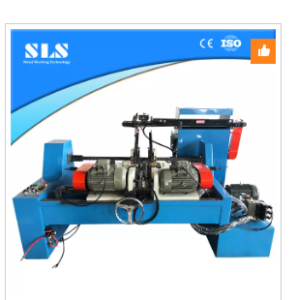Exploring the Uniqueness of a Chair Pipe Bending Machine
Chair pipe bending machines stand out in the furniture manufacturing industry for their ability to produce intricate bends required for stylish and ergonomic chair designs. This detailed exploration will highlight the key features, performance, and advantages of these specialized machines.
Core Features and Their Impact
Advanced Control Systems
A chair pipe bending machine integrates state-of-the-art CNC technology which allows for precise control over the bending process. This technology enables the machine to execute complex bending sequences with high precision, essential for creating aesthetically pleasing and comfortable chair frames.
High Flexibility and Range
These machines can handle various pipe diameters typically ranging from 10 mm to 100 mm, making them versatile for different chair designs and sizes. The ability to adjust the machine quickly for different pipe sizes and shapes is crucial for manufacturers who produce a diverse range of furniture.
Efficiency and Speed
Chair pipe bending machines are designed to optimize the bending process, achieving bending speeds that significantly reduce cycle times. This efficiency is vital in mass production settings, where manufacturers strive to maximize output and minimize turnaround times.
Detailed Specifications and Performance
Power Usage and Output
These machines typically operate with a power range from 5 kW to 20 kW, depending on their size and the complexity of operations they perform. The power directly correlates with the machine's ability to work with thicker and more resistant materials.
Cost Effectiveness
The initial investment for a chair pipe bending machine might range from $30,000 to $100,000. The cost is justified by the machine's contribution to reducing labor expenses and increasing production efficiency, which can significantly improve a company's bottom line over time.
Durability and Maintenance
Designed for continuous use, chair pipe bending machines are constructed to last approximately 35,000 operational hours with regular maintenance. Maintaining the machine includes periodic checks and replacements of hydraulic fluids and worn-out parts, which ensures long-term reliability and performance.
Dimensions and Installation
The typical dimensions for these machines are about 4 meters in length by 2 meters in width, and they weigh around 3000 kilograms. Planning for adequate space is essential for smooth operation and accessibility for maintenance.
Key Advantages and Material Handling
Chair pipe bending machines are capable of bending both metallic and non-metallic materials, which broadens the scope of design possibilities for furniture manufacturers. The primary advantage lies in their ability to produce consistent and accurate bends, which are crucial for the aesthetic appeal and structural integrity of chair frames.
In conclusion, chair pipe bending machines are indispensable tools in the furniture manufacturing industry, known for their precision, efficiency, and flexibility. These machines enable manufacturers to push the boundaries of chair design, transforming simple pipes into stylish and durable furniture components.

